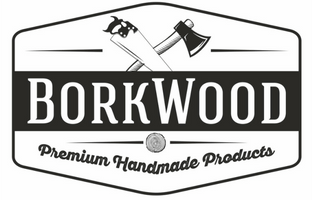Should Landlords Invest in Section 8 Housing?
Considering diving into Section 8 housing as a landlord? Explore the pros and cons of this investment venture.
As you weigh the Section 8 benefits of assured rental payments and high demand against risks like property damage and limited control over rent rates, government compliance becomes a crucial factor.
This article aims to help you decide if Section 8 housing is the right investment choice for you, emphasizing the need for careful evaluation before taking the plunge.
Advantages of Section 8 Housing Investment
If you’re considering investing in Section 8 housing, you’ll appreciate the advantages it offers. The benefits of Section 8 investing include assured rental payments, high demand leading to low vacancy rates, and free or cheap marketing opportunities. Being a Section 8 landlord gives you a competitive edge in the market, with regular rent increases and long-term stability.
Additionally, you’ll attract incentivized renters and help integrate low-income families into traditional rental environments. Financially, you can count on assured rental income, higher rental demand, rent increases over time, reduced vacancy rates, and stable long-term tenancies.
These benefits make Section 8 investing a lucrative option for landlords looking to secure a reliable source of income while making a positive impact in their community.
Risks and Challenges for Landlords
Consider the potential hurdles landlords may face when investing in Section 8 housing. Bureaucracy and red tape can lead to initial delays and less control over the property. Property damage risks, eviction challenges, and potential late payments are also common concerns.
Landlords have limited control over rent rates and must meet strict inspection requirements. Security deposit issues, such as the lack of guaranteed funds from Public Housing Authorities (PHAs), can pose additional challenges.
Government scrutiny and compliance add another layer of complexity, with yearly PHA inspections and the risk of subsidy termination for non-compliance.
High-value property investors may find it challenging to align Section 8 rates with market rates, potentially leading to lower profitability.
Government Compliance and Scrutiny
Facing the challenges outlined in the previous section, landlords must navigate government scrutiny and compliance requirements when participating in Section 8 housing. Yearly inspections by Public Housing Authorities (PHAs) and adherence to HUD safety and decency standards are essential. Failure to comply can lead to subsidy termination, tenant eviction, and potential financial losses.
Landlords are expected to meet PHA standards continuously to receive subsidies, adding an extra layer of responsibility. This scrutiny ensures that properties meet required standards for the well-being of Section 8 tenants. Understanding and following these compliance guidelines are crucial for maintaining a successful Section 8 rental property.
Be prepared for the oversight and requirements that come with government involvement in Section 8 housing to navigate this aspect effectively.
Considerations for High-Value Property Investors
When considering Section 8 housing as a high-value property investor, it’s important to assess the potential impact on Section 8 rental rates and profitability.
High-value properties may face challenges with Section 8 due to possible restrictions on rental rates imposed by Public Housing Authorities (PHAs). Setting appropriate rental rates for Section 8 tenants can be complex, potentially leading to lower profitability compared to market rates.
The misalignment between market rates and Section 8 rates could affect the overall financial returns on high-value properties. As a high-value property investor, navigating these potential limitations and understanding how they might affect your investment strategy is crucial.
Evaluating the suitability of Section 8 for individual high-value properties is essential to make an informed decision about participating in the program.
Decision-Making Factors for Landlords
As a landlord evaluating the potential of Section 8 housing, it is crucial to carefully assess the financial implications. Some advantages to consider include the guaranteed rental income, high demand, and long-term stability. On the other hand, there are risks to evaluate, such as bureaucracy, property damage, and limited control over rent rates.
It is important to understand the government scrutiny and compliance requirements associated with Section 8 housing, including yearly inspections and adherence to safety standards. Landlords should also recognize that Section 8 may not align with high-value property investments due to rent restrictions and potential profitability challenges.
To make an informed decision, landlords should weigh the pros and cons of participating in Section 8 housing. It is essential to understand that participation is voluntary in most states. Remember to tailor your evaluation to the specific characteristics of your properties to determine the suitability of Section 8 housing for your rental portfolio.
Conclusion
In conclusion, as a landlord, investing in Section 8 housing can offer a reliable source of rental income, high demand, and long-term stability.
However, it comes with risks such as property damage, inspection requirements, and limited control over rent rates. Consider government compliance and scrutiny, especially for high-value property investors.
It’s crucial to carefully evaluate all factors before deciding if Section 8 housing is the right investment opportunity for you.







